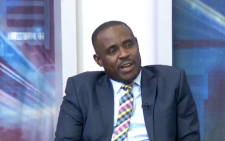Saba Saba was turning point in quest for freedoms

On a day like today, 35 years ago, dissenters who had found themselves out of the only political party after Kenya became a one-party State by law took to the streets to press for a return to a pluralistic system of governance.
This was after the unicameral Parliament amended the constitution to that effect on June 9, 1982.
Framers of Section 2A that got inserted in the former constitution to accomplish this ignoble feat left no doubt as to the only party they had in mind. Section 2A officially declared Kenya a one-party state, with KANU as the sole legal political party.
This amendment effectively outlawed the formation of other political parties and solidified KANU’s dominance for nearly a decade.
This amendment was a direct response to the perceived threat of opposition parties, particularly the potential for Oginga Odinga to form a new party.
The amendment was part of a series of changes aimed at consolidating President Daniel Arap Moi’s power, including removing security of tenure for certain constitutional office holders, with the removal of security of tenures of the Attorney General and the Chief Justice being the most outstanding.
The 1963 independence constitution provided for a multiparty parliamentary system, with Jomo Kenyatta as Kenya’s first Prime Minister. But as soon as the country gained independence in 1964, amendments to the constitution began, altering its basic structure so much that even its framers could barely recognise it.
During the early years of Kenya’s existence, the constitution was abused by the executive and the ruling party to gain and consolidate power. This was achieved through the creation of a single-party state, the abolition of secret ballots, and increasing the power and prestige that comes with the presidential position.
Various individuals and groups formed underground and civil society organizations to provide security and advocate for political reforms.
The 1980s and 90s saw the rise of several underground political movements, often in response to the one-party rule under KANU.
These movements included the Mwakenya movement which focused on achieving multiparty democracy and various other groups that emerged in response to political and economic marginalisation
The Mwakenya movement, also known as the Union of Patriotic Kenyans, was a socialist underground movement that emerged in the 1980s.
In the 1990s, with the push for multiparty politics gaining momentum, groups like the Taliban, Jeshi la Embakasi, Mungiki, and Sungusungu emerged, some in response to marginalisation and others in the struggle for political and economic power.
But it was the audacious push by political heavyweights led by the likes of Kenneth Matiba, Charles Rubia, Raila Odinga, Martin Shikuku, James Orengo and Kennedy Kiliku that forced a recalcitrant Moi and his KANU party to cede ground, after realising that it was no longer tenable to rule under the one-party system.
In December 1991, at a KANU delegates meeting at Kasarani Stadium, President Moi ordered the repeal of Section 2A of the Constitution, thereby restoring Kenya to its original multiparty state. The change also enabled the introduction of term limits for Presidents.
It’s gratifying that every successive generation has seized the Saba Saba spirit to push for change for the advancement of Kenya’s democratic enterprise. The Gen Z moment is now.
The writer is the Executive Director of the Kenya National Civil Society Centre and Chairperson of the Horn of Africa Civil Society Forum















